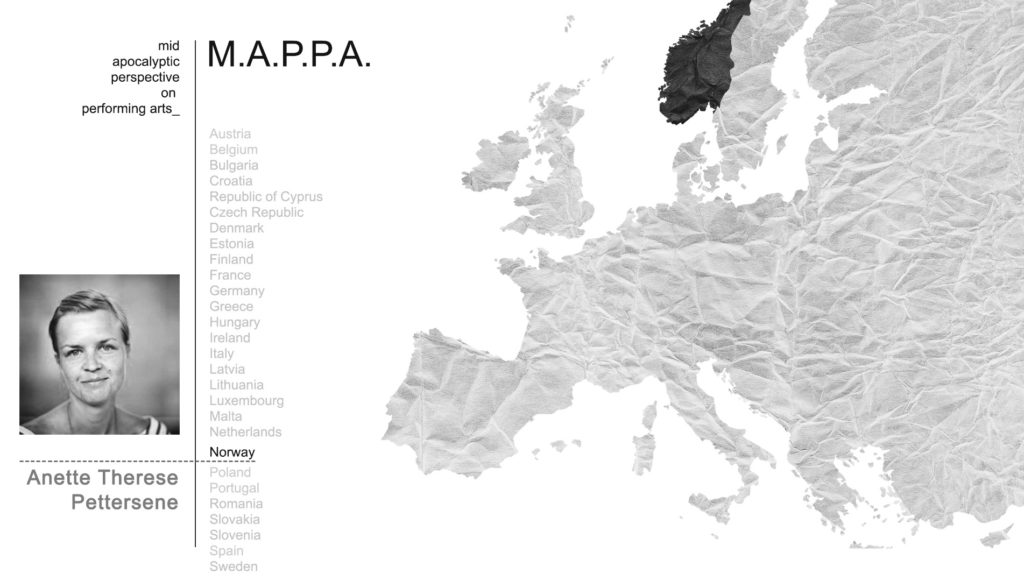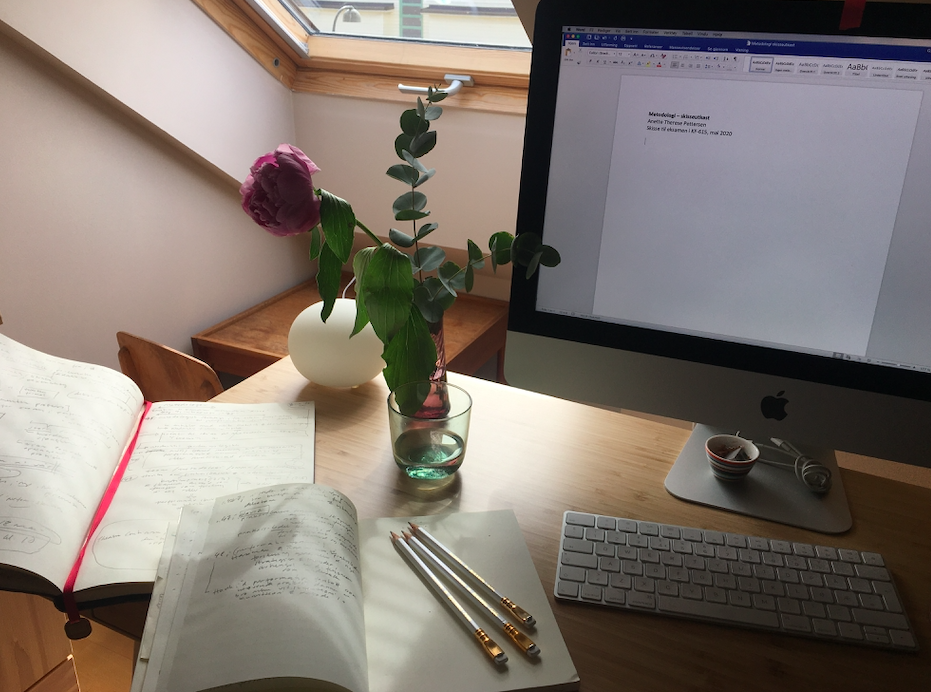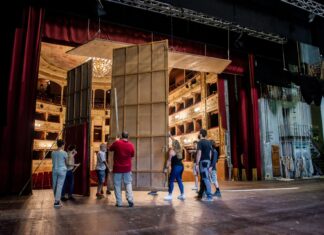 M.A.P.P.A. è un progetto di ricognizione e mappatura: teatro e performing arts in Europa durante la pandemia da Covid-19. Come stanno reagendo governi, teatri, artisti e osservatori alla crisi dello spettacolo dal vivo? Abbiamo intervistato giovani giornalisti, osservatori e critici provenienti da tutta Europa.
M.A.P.P.A. è un progetto di ricognizione e mappatura: teatro e performing arts in Europa durante la pandemia da Covid-19. Come stanno reagendo governi, teatri, artisti e osservatori alla crisi dello spettacolo dal vivo? Abbiamo intervistato giovani giornalisti, osservatori e critici provenienti da tutta Europa.
Leggi le altre interviste di M.A.P.P.A.
Anette Therese Pettersen è una giornalista freelance che si occupa di critica teatrale e di danza, è editor e curatrice. MA presso l’Università di Oslo e attualmente PhD research presso la I’Università di Adger in Norvegia. Scrive recensioni e saggi per la rivista Morgenbladet e collabora anche con Norsk Shakespeare- og Teatertidsskrift e Scenekunst.no .Editor di libri e periodici tra i quali l’antologia Criticism for an absent reader (2018) e una serie di cinque volumi sulle compagnie di performing arts Verk Productions (2018-19). Co-fondatrice di progetti che esplorano la critica: Performing Criticism Globally, Dance Critics Movement (Dansekritikerrørsla), Critics in Conversation and Writingshop.
Quali misure sono state prese a sostegno dei lavoratori dello spettacolo in Norvegia?
A tutti gli artisti (compresi i critici) che avevano ricevuto finanziamenti dall’Arts Council e che hanno dovuto annullare spettacoli o progetti a causa delle misure prese per il Covid-19, non è stato chiesto di restituire il finanziamento che avevano ricevuto. È stato anche possibile richiedere un supporto per iniziative digitali sia al Arts Council che all’organizzazione Fritt Ord (Free Speech). Chiaramente, la quantità di domande è stata molto più elevata rispetto ai fondi a disposizione.
Diversi teatri hanno temporaneamente licenziato i loro attori e stanno invece ricevendo aiuti finanziari dal governo. Anche gli artisti indipendenti che sono in questa situazione possono richiedere gli aiuti finanziari messi a disposizione dal governo, ma si è discusso molto su come calcolare l’importo dell’aiuto, ed il sistema di assegnazione del contributo non era preparato per un così elevato numero di richiedenti.
Quali sono le misure previste riguardo alle riaperture dei teatri?
La Norvegia ha iniziato a riaprire lentamente da Pasqua con il distanziamento sociale di almeno un metro, oltre a lavarsi le mani (bottiglie di liquido antibatterico si trovano in tutti i negozi, caffè, stazioni ferroviarie ecc.), ma non è così diffuso l’uso di mascherine facciali. Alcuni teatri hanno riaperto, con il pubblico seduto ad una distanza di almeno un metro l’uno dall’altro. È anche nuovamente consentito viaggiare, ma ci sono alcune limitazioni su biglietti e posti a sedere. Ormai dal 15 giugno sono consentiti raduni fino a 200 persone in pubblico (incluso in teatro), e sarà anche possibile viaggiare dalla Norvegia verso altri paesi nordici (tranne la Svezia).
Il periodo del lockdown ha visto molti teatri e compagnie pubblicare su internet parte dei loro archivi. Molte sono anche le performance nate online, così come si parla sempre più di residenze digitali. Persino i festival, luoghi di incontro per eccellenza, stanno proponendo un cartellone digitale. Come vi relazionate a queste modalità di fruizione?
Faccio molta fatica con queste soluzioni digitali. In queste settimane (o, piuttosto, mesi), la maggior parte di ciò che ho visto sono stati esempi di artisti e / o istituzioni che cercavano di rendere le loro opere disponibili su piattaforme digitali. Le opere sono state leggermente adattate, ma la maggior parte di queste opere non era stata inizialmente progettata o realizzata per una fruizione in digitale. Pochissimi sembrano aver pensato a come ciò influisca sulla drammaturgia, e a volte è sembrato un po’ come guardare una tv amatoriale fatta male. È un po’ come spostare l’arte nello spazio pubblico: non puoi solo tirare fuori delle sedie per strada e aspettarti che le persone si comportino come farebbero in un teatro. Molti di noi hanno già preso abitudini e modi di muoversi (o non muoversi) nelle strade, e così accade coi nostri computer. Quando provo a guardare il teatro online divento irrequieta quasi immediatamente e faccio fatica a concentrarmi sullo schermo.
Quali sono state le pratiche performative più interessanti durante i giorni del lockdown dal tuo punto di vista?
Da qualche tempo mi sono interessata all’audio-teatro, al radio-dramma, e sono felice di vedere che alcuni teatri hanno iniziato a esplorare questa possibilità durante il lockdown. Questo formato mi consente di fare una passeggiata mentre ascolto, e questo rende più semplice concentrarsi sull’evento, per così dire, rispetto a quando sono seduta davanti a un computer. Penso che il modo in cui mi preparo per l’ascolto – mettendomi le scarpe e la giacca, preparandomi a lasciare l’appartamento – lo accomuni di più al partecipare a un evento, piuttosto che guardare qualcosa al computer. Fruiti dietro uno schermo, gli spettacoli tendono invece poi in seguito, nella mia memoria, a confondersi con il mio lavoro, le e-mail, le notizie, ecc. Lo scenario in costante cambiamento della mia passeggiata fa invece risaltare maggiormente parti dell’esibizione, me lo fa ricordare come un evento che si è svolto in un luogo specifico.
Credi che questa crisi cambierà profondamente i linguaggi, gli spazi, i temi delle arti performative?
Spero che specialmente le istituzioni vedano questa crisi soprattutto come un’opportunità per ripensare il loro ruolo e responsabilità nella società. Per chi ci esibiamo e perché dovremmo continuare a riunirci? Con le attuali manifestazioni in corso sia in Europa che negli Stati Uniti, riguardo al razzismo e al movimento Black Lives Matter, queste domande sembrano ancora più potenti. Quali storie vengono raccontate e in quali modi? Spero davvero che ci saranno dei cambiamenti e ho paura di ciò che potrebbe accadere alle arti dello spettacolo se questi cambiamenti non ci fossero. Il modo in cui le sale stanno riaprendo ora, con una capienza molto limitata, probabilmente renderà i teatri ancora più esclusivi. Se i loro budget ricevono tagli, i prezzi potrebbero aumentare (e la maggior parte dei prezzi dei biglietti dei teatri istituzionali sono già ad un livello allarmante), il che significa che il teatro diventa un bene di lusso. Una delle mie più grandi paure è che la crisi porti a un isolamento delle arti dello spettacolo, riservandole (ancor di più) a pochi privilegiati, anziché farne un luogo di ritrovo. Una delle cose che amo davvero del teatro è la possibilità di vivere la solitudine in compagnia: stare con le persone e allo stesso tempo mantenere vivo il dialogo interiore.
È possibile vivere del mestiere del critico in Norvegia?
Da quindici anni sono critica freelance, curatrice e docente: nella mia esperienza, il critico si trova da qualche parte tra queste tre posizioni. Nessuno vive di sola critica in Norvegia. La maggior parte dei critici sono liberi professionisti e lavorano anche come giornalisti, docenti, conferenzieri. Il campo accademico del teatro e della danza è piuttosto limitato, con pochissimi ricercatori a tempo pieno. Tuttavia negli ultimi dieci o quindici anni sono cresciute le sovvenzioni per la categoria. Le principali sono quelle estese anche ad attori, registi, scenografi ecc… che si possono richiedere per un lasso di tempo da uno a dieci anni. Certo non ne vengono assegnate molte, ma coloro che vi accedono ricevono un finanziamento su base mensile. Il contributo è equivalente al 50% di ciò che ognuno guadagnerebbe lavorando. I critici possono anche richiedere finanziamenti mirati per progetti editoriali e non, il che consente un ruolo più indipendente e l’esplorazione dei diversi formati della critica.
Che cosa ti manca di più della dimensione live delle arti performative?
Mi manca tutto ciò che ci conduce-alle e circonda le performance: mi manca andare a teatro, riunirsi nel foyer e aspettare l’ingresso in sala. Mi mancano tutti i piccoli incontri fortuiti, le conversazioni casuali che hai con le persone nel foyer prima e dopo lo spettacolo. Mi mancano i momenti poco prima dell’inizio della performance; il modo nel quale la gente sente che sta per iniziare lo spettacolo e quindi smette di parlare, e inizia a concentrarsi verso il palcoscenico o sullo spazio che ci circonda. Mi manca la concentrazione collettiva (o la sua mancanza) e il rituale dell’ “andare a teatro”.

Anette Therese Pettersen is a freelance theatre and dance critic, editor and curator. She has an MA in theatre science from the University in Oslo and is currently a PhD research fellow at the University of Agder in Norway. She writes reviews and essays for the weekly paper Morgenbladet and periodicals suchs as Norsk Shakespeare- og Teatertidsskrift and Scenekunst.no. Editor of books and periodicals, such as the anthology Criticism for an absent reader (2018) and a series of five books about the performing arts company Verk Productions (2018-19). Co-founder of projects that explore criticism: Performing Criticism Globally, Dance Critics Movement (Dansekritikerrørsla), Critics in Conversation and Writingshop.
What are the measures overtaken by the Norwegian government, or by the local institutions, in support of the theatre workers?
All artists (including critics) who had received funding from the Arts Council, and had to cancel performances or projects due to Covid-19, where not asked to return the funding they had received. It has also been possible to apply for support for digital initiatives from both the Arts Council and the organisation Fritt Ord (Free Speech). Of course, the amount of applications has been a lot higher than the funds.
Several theatres temporarily fired their actors, and they are instead receiving financial aid from the government. Freelance artists are also in this situation allowed to apply for financial aid from the government, but there has been a lot of discussion as to how the amount of aid should be calculated, and the system for delegating the aid was not prepared for the high number of applicants.
What are the measures concerning the reopening of theatres?
Norway has been in the slow process of opening up again since Easter. Social distance of at least 1 meter, as well as washing one’s hands (bottles of antibacterial liquid are found in all shops, cafes, train stations etc.), but it is not common to use facial masks in Norway. Private gatherings up to 20 people and public ones up to 50 are now allowed. The same goes for restaurants and cafes. Some theatres have therefore started with performances again, with the audience seated with a distance of at least 1 meter apart from each other. It is also allowed to travel again, but there are some limitations on tickets and seating. As of the 15th of June, gatherings of up to 200 people in public (including theatre) is allowed, and it will also be possible to travel from Norway to other Nordic countries (except for Sweden).
During the lockdown many theatres and companies published part of their archives on the Internet. Also, we have been watching many digital performances, as well as there has been an intensive talking about “digital residences”. Even the festivals, that can be seen as the most evident meeting places, are proposing a digital billboard. How do you relate to this way of enjoying the performing arts?
I struggle a lot with these digital solutions. In these first weeks (or, rather months), most of what I have seen have been examples of artists and/or institutions trying to make their works available on digital platforms. The works have been slightly adjusted, but most of it has not been initially planned or made for digital consumption. Very few seem to have thought about how this affects the dramaturgy, and at times it has all felt a bit like watching really bad amateur tv. It’s also a bit like moving the arts into public space: You don’t just put out chairs in the street and expect people to behave as they would in a theatre. Most of us have already established habits and ways of moving (or not moving) in the streets, and the same on our computers. When trying to watch theatre online, I get restless and fidgety almost immediately, and I struggle to keep my focus on the screen.
The most interesting alternative theatrical practices you have experienced in these days
I have for some time been interested in audio theatre and am delighted to see that some of the theatres have started to explore this further during the lock-down. This format allows for me to go for a walk while I listen, and this makes it easier to focus on the event, so to speak, than when I’m seated in front of a computer. I think the way I prepare for the listening – putting my shoes and jacket on, getting ready to leave the apartment – also makes it stand out more as an event, more than watching something on the computer. The latter tend to get more mixed up with my work, email, news etc. in my memory afterwards. The constant changing scenery of my walk makes parts of the performance stand out more, makes me remember them as an event that took place on a specific spot.
Do you think the current state-of-things will affect the language, the topics, the space of the performances etc…in deep? If yes, how?
I hope the institutions especially see this as an opportunity to rethink their role and responsibility in society. For who are we performing, and why should we gather? With the current demonstrations going on in both Europe and the US, regarding structural racism and the Black Lives Matter movement, these questions seem even more potent. What stories are told, and in what ways?
I hope there will be some changes, and I am afraid of what might happen to the performing arts if there are no changes. The way the theatres are opening up now, the seating capacity is very limited, which will most likely make theatres even more exclusive. If their budgets receive cuts, the prices might increase (and most of the institutional theatres’ ticket prices are already at an alarmingly high level), meaning theatre becomes a luxury commodity. One of my biggest fears is that the crisis will lead to an isolation of the performing arts, reserving it (even more than now) for the privileged few, instead of being a place for assembly. One of the things I really love about the theatre is the possibility for solitude in company. To be with people, and at the same time keep up the inner dialogue.
What is the labor framework of the performance art criticism in Norway?
In my fifteen-years experience as a freelance writer, curator and lecturer, the critic is somewhere in between these three positions. There are no fully employed performance art critics in Norway. Most critics who writes for newspapers are either freelancers or also working as journalists. The academic field of theatre and dance is rather small in Norway, with very few fully employed academics. It is quite common for critics to also be editors, teachers or lecturers, host panel talks etc…
Over the last ten to fifteen years, there has been an increasing amount of grants for critics. The main ones are the working grants, where artists can apply for one to ten years. These grants are few, but those who received them receive the funding on a monthly basis. The monthly fee is the same as the salary one would receive for working 50%. This is available for both critics, visual artists, actors, directors, scenographers etc. Critics can also apply for project funding and funding of essays, which allows for a more independent role and for exploring criticism and its formats.
What do you miss most from live performances and plays?
I miss everything that leads up to and surrounds the performances: I miss going to the theatre, hanging out in the foyer and waiting to be let into the auditorium. I miss all the small and unplanned meetings and conversations you have with people while waiting in the foyer or hanging out at the theatre afterwards. I miss the moments just before the performance starts; how people sense that it begins, and thus stops talking, and start focusing on the stage or the space surrounding us. I miss the collective concentration (or lack of it) and the ritual of ‘going to the theatre’.














